Awww Honey Honey! | Super Cool Science S#!t #28
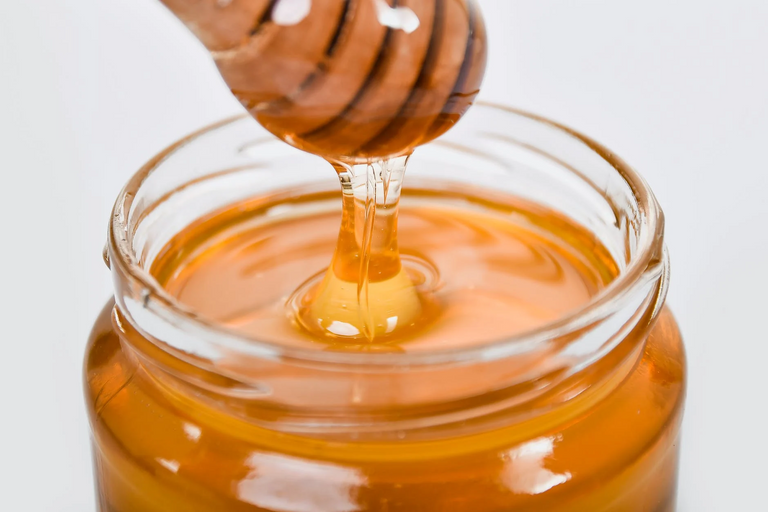
A jar of delicious honey. Source
There's so much science involved with Honey!
Not only is honey delicious, but it's also an incredibly complex substance that deserves a place on our list of the most awesome things in the world of science!
How is Honey Made?
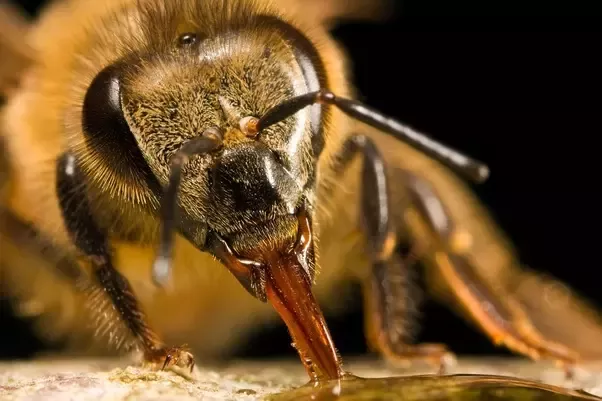
A bee collecting nectar. Source
It all starts with the nectar produced in flowering plants. "Forager" bees fly around to gather nectar using their "proboscis", a long, straw-like tongue. It can take around 1000 flowers worth of nectar to fill the bee's honey stomach, or "crop".
The crop is completely separate from their digestive stomach and is only used to store nectar. When full, the crop can weigh nearly as much as the bee itself!
While carrying the nectar back to the hive, an enzyme called invertase is added to start breaking down the nectar into more simple sugars. Once the forager bee returns to the hive with the nectar it's collected, it hooks up with a "processor" bee to create an episode of "two bees, one cup" by regurgitating the nectar in its crop directly into the crop of the processor bee...
By mixing more enzymes such as amylase, glucose oxidase, and catalase into the nectar in their crop, the processor bees can change the chemical makeup and pH levels of the nectar, breaking down complex sugars like sucrose even further into the more simple sugars glucose and fructose.
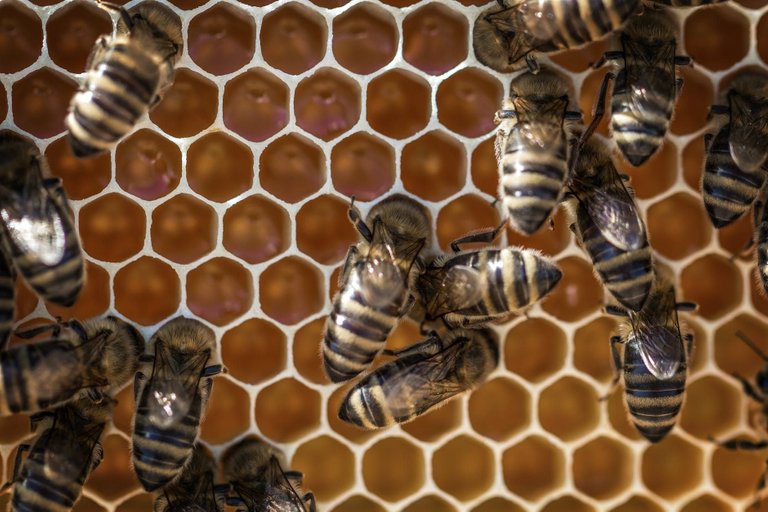
Bees caring for the honeycomb. Source
Here's where the real work starts. Nectar is roughly 70% water, but honey needs to contain around 15%. To "ripen" the nectar into honey, the processor bee regurgitates and re-drinks the nectar/enzyme mixture over and over until it's down to around 20% water.
At this point, the bees further process the honey by fanning their wings to create airflow that will help speed up evaporation. When it's been concentrated down to the right consistency, the honey is deposited into a storage cell within the hive and covered over with a secretion of liquid from their abdomens that hardens over to form beeswax, the very same material the honeycomb is built with.
Stored here, so long as it stays sealed away from the open air and moisture, honey can be kept indefinitely, giving the hive enough food to survive through the winter.
Different flower, different honey.
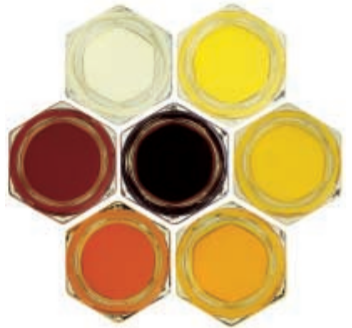
Different colors of honey. Source
Most Americans are used to only seeing or consuming "clover honey", which has a yellowish color and a mild flavor, but depending on the type of flowering plant the bees collect their nectar from, honey can come in a very wide range of colors, tastes, and chemical makeups.
Honey made with nectar gathered from fireweed can be almost ghost-white and has a mild flavor, while honey made from buckwheat stands in stark contrast, being much darker and with a stronger "molasses or malt" flavor.
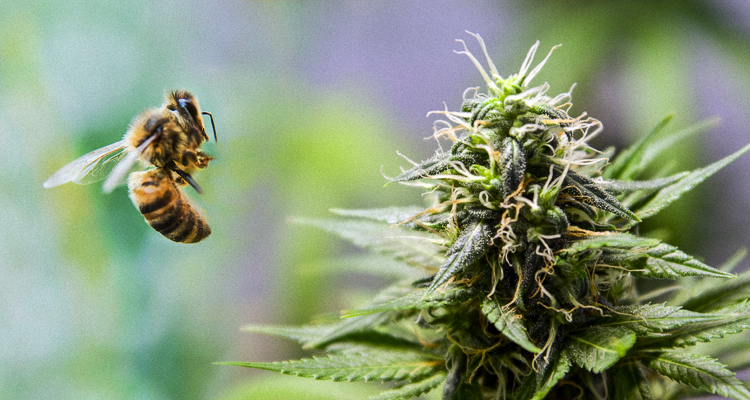
A honeybee buzzing around my favorite flower. Source
In the hills of Ventura County, California, one farm's bees produce honey by gathering nectar and resin from marijuana plants! While the final product "does not test for cannabinoids", "Users have described the CannaHoney effect as soothing, head-clearing, motivating and energy-boosting"
As bees are collecting nectar, they carry pollen from the plant back to the hive with them that often ends up as an ingredient in the honey. For this reason, honey can cause allergic reactions in certain people. Because botulinum toxin can remain in a deactivated state in honey until consumed, people are advised against feeding honey to infants.
Did you know honey is antibacterial?
Because of its supersaturated nature, honey is hygroscopic, meaning it will absorb moisture from its surroundings. This is very bad for bacteria and microbes, and honey will pull the water from single cells and prevent them from replicating through a process known as osmosis.
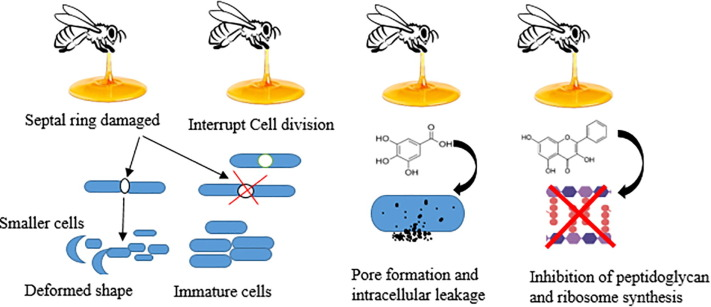
"Schematic representation of the antimicrobial effects of honey." Source
Different types of honey have differing levels of antibacterial potency and on top of its hygroscopy, the pH level of the honey is thought to have an even greater effect on the antimicrobial nature of this delectable superfood.
Due to these factors, honey has been used as a topical treatment for burns and infections since the days of ancient Egypt and is still widely used today. One study even showed that honey could be more effective for treating upper respiratory infections in children than over-the-counter medicines that use chemicals like diphenhydramine.
Honey is super cool!
There's a reason why humans and other animals like bears and badgers actively seek out beehives to steal some of their food stores... Not only is it delicious, but it's also incredibly useful!
I hope this article has taught you something you didn't know a few minutes ago when you started reading it, and if you'd like to learn even more, consider catching up on the rest of the series HERE!
References:
Thanks so much for reading!


Hi thatsweeneyguy,
Visit curiehive.com or join the Curie Discord community to learn more.
Super interesting the process of honey production and the types of honey. Bees are really interesting insects and let me tell you that their communication system is very studied in linguistics because it is as complex and elaborate as ours. Thank you for this post I liked it very much
They're little geniuses! Thanks for stopping by and leaving a comment 😁
Thanks for the detailed description of the making process. With the crazy amount of honey I eat (I couldn't imagine my breakfast without butter and honey on bread, lots of it!), it's kinda strange I never bothered looking it up. I will appreciate it even more now that I know more about what goes into it.
They definitely put a lot of work into puking it up and eating it over and over a few times to get it to juuust the right tastiness 😅
Thanks for reading! I'm truly glad you enjoyed it.
Interesting write up about honey. I got interested in bẹẹ farming recently and I've been gathering information on bees and honey since then. The colour of the honey produced also correlates with the quality. Black honey is damn more expensive and assumed to be of more quality than others. Thanks for sharing this lovely piece.
Really interesting, I eat honey daily
Bees are beautiful, vomiting into each other and spreading the lovely vomit around for us all. I love all things #hive 😍
😂😂😂
Thanks for your contribution to the STEMsocial community. Feel free to join us on discord to get to know the rest of us!
Please consider supporting our funding proposal, approving our witness (@stem.witness) or delegating to the @stemsocial account (for some ROI).
Please consider using the STEMsocial app app and including @stemsocial as a beneficiary to get a stronger support.